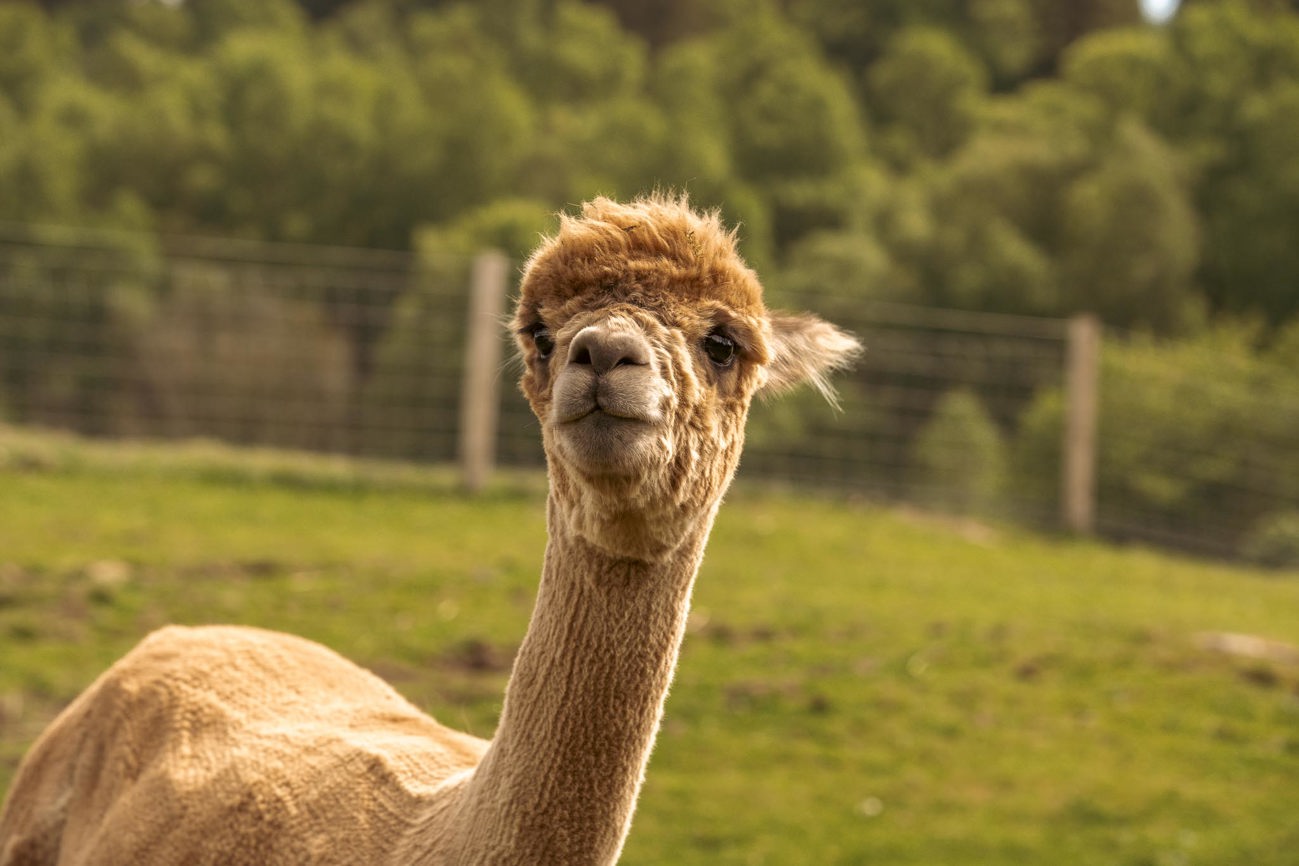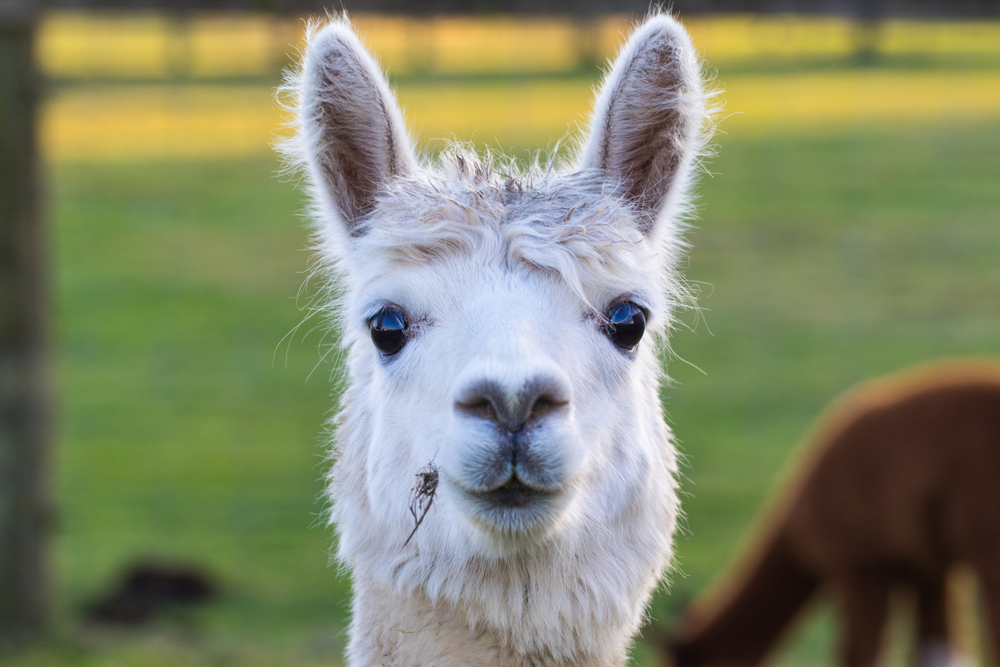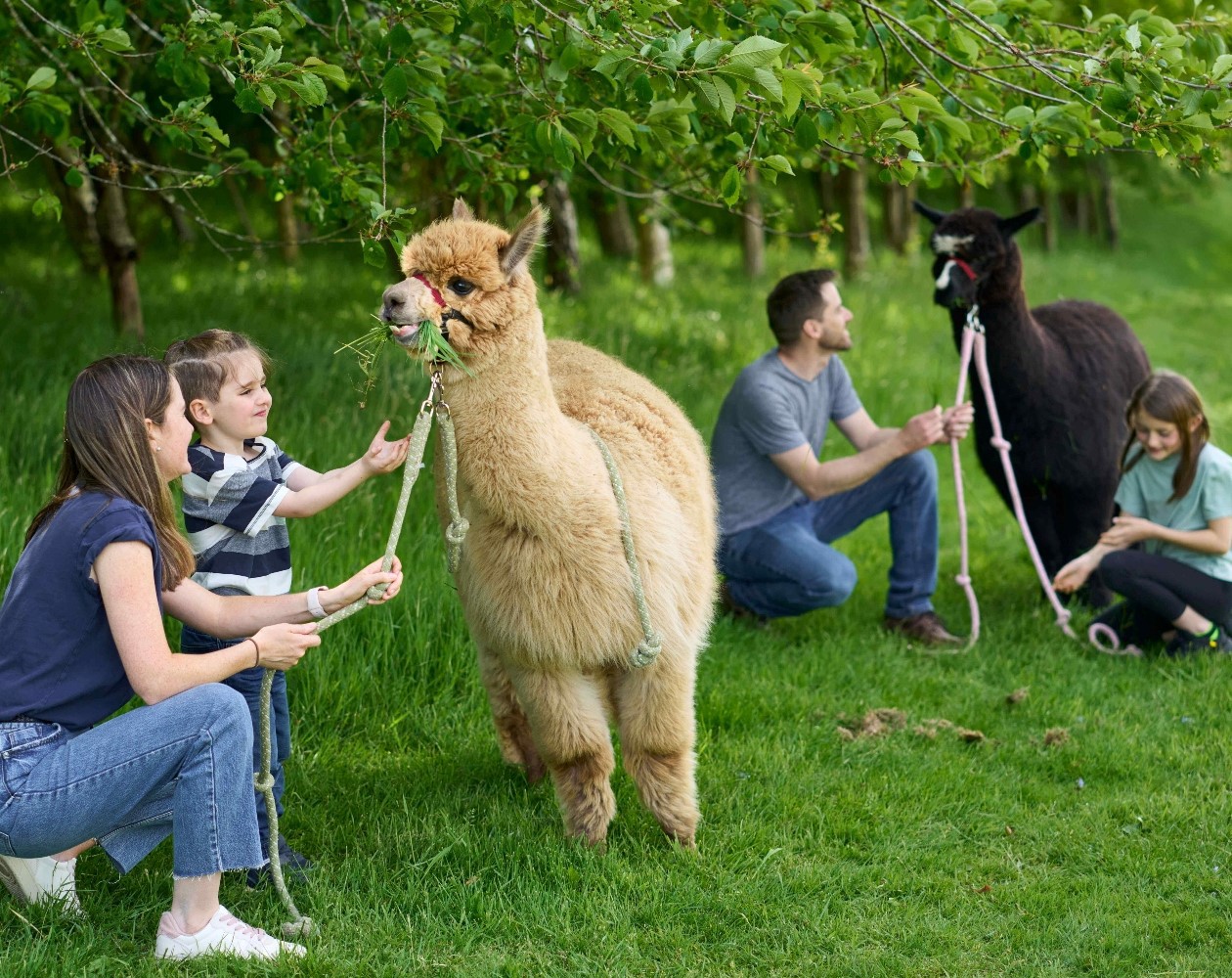
Where are alpacas originally from?
Alpacas have travelled quite a distance to grace Scotland's shores. Native to the Andes in South America they were domesticated around 6000 years ago by the Incas, an ancient Indian civilization. Their role was vital in the daily life and culture of Incas, serving as pack animals and providing cosy warm fleece for clothing.
Alpacas (Vicugna pacos) descend from the Camelidae family which also includes llamas, guanacos (much larger and wild) and vicuñas (also wild and distinctively short at about 36 inches - similar to Scotland’s own Shetland ponies).
There’s no denying that in recent years alpacas have captured the hearts and imagination of people worldwide. Their story is steeped in history, versatility and absolute charm. From their ancient Incan roots to their modern-day role as therapeutic companions and sustainable fashion influencers - they have all the right qualities.
Are there different breeds of alpacas?
There are two types of alpaca - the Huacaya and Suri. They look pretty different, so it’s relatively easy to distinguish them. The Huacaya have a fluffy, dense fleece with a crimped appearance (cute teddy bear look), while Suri alpacas have long, silky, and lustrous locks that cascade down their bodies giving a very elegant and regal appearance.
The wool produced from their remarkable fleece is prized for its softness and warmth, not to mention its hypoallergenic properties. Alpaca fleece does not contain lanolin so it’s less itchy and more comfortable for sensitive skin, and neither does it retain water, making it the second strongest animal fibre after mohair. Their fleece ranges in 22 colours from a deep blue-black to browns, tans and white.
Their natural habitat in the highlands of the Andes means they’re well adapted to harsh weather conditions, including freezing temperatures and intense sunlight. This is likely why they’ve settled so well in Scotland.
What is interesting about alpacas? Traits that set them apart
Alpacas are herbivores and feed mainly on grass and leaves. Their soft padded feet prevent soil erosion, and their efficient digestive system contributes to soil enrichment. On the subject of digestion - fun fact - each herd member will deposit its ‘waste’ in the same spot to prevent the risk of disease, so it’s common to see them queuing to use the ‘loo’. Such clever animals, they deserve an award for nurturing ecosystems and living sustainably.
Alpacas thrive in herds and have natural guardian instincts. They are super alert, territorial and form strong bonds within their groups. They love to play, show affection and are highly social. In the wild the herd provides protection against predators, and in domestic settings they provide companionship and a reassuring sense of security.
Their style of walking is quite unique. They move both legs on one side of their body forward and then the other side, creating a gentle swaying motion. This peculiar walk is often likened to a slow dance adding to their charm. Watching them up close is a real delight.

What do alpacas do when they are happy or angry? Their quirky behaviours
When alpacas are happy and content they display positive behaviours. Firstly, they hum. Each alpaca’s hum is distinct and allows others to recognize and respond to individual calls. The humming sound is soft and gentle. A happy alpaca has a relaxed body posture, their necks may be extended, and their heads held high. Dust bathing is a favourite when they’re relaxed, lying down in sunny spots to roll in the sand. They often engage in playful behaviour amongst the herd, including play-fighting, prancing and running.
If an alpaca feels angry, agitated or fearful it will emit a high-pitched shrieking sound. This is a warning sound to the herd of a potential danger and also serves to communicate their dominance and protect their territory. Their eyes widen, their nostrils flare and their ears are held flat against their head indicating heightened alertness and stress. Rapid tail twitching is another sign of distress, and in certain scenarios, an angry alpaca may kick its hind legs as a display of aggression. Unlike humans, they don’t shed tears to express their emotions, it’s all in their vocalisations.
Do alpacas give kisses?
Though they are very affectionate creatures, alpacas don’t give kisses in the same way other animals do. They don’t have the same anatomy to physically give kisses, as they are missing their top-front teeth, often exaggerating their goofy look. They do love showing affection in their own unique way and will nuzzle and groom each other as a sign of camaraderie.
Why do alpacas show their teeth and spit? Exploring herd etiquette
Alpacas will show their teeth as a sign of discomfort or aggression. It’s a warning to others to back off, whilst also establishing boundaries and protecting themselves from perceived threats. Spitting is a natural behaviour for alpacas, and is used for communicating and self-defence. They spit at each other, particularly during breeding time or disputes over food and territory. Interestingly, they rarely spit at humans, only if they feel severely threatened or mistreated.
Do alpacas sleep lying down?
Like most animals, alpacas need rest and sleep to re-energise. They sleep either lying down or standing up, though they prefer lying down for longer rest periods. When they feel safe and comfortable in their surroundings, they stretch out in a soft spot to take a nap in their pasture or shelter.
Why do alpacas like to stand in water?
Unlike other animals, alpacas don’t swim, however, they are smart enough to use water to regulate their body temperature. In particularly hot weather they seek out shallow water sources such as puddles or small streams and will stand in them to cool off and alleviate discomfort.
Do alpacas love humans? Two worlds, one connection
Alpacas form strong bonds with their human caretakers if they’re raised well with gentle handling, positive interactions and consistent care. They show affection and communicate their happiness with humans by humming and nuzzling into them. Nowadays, alpacas play a therapeutic role with humans. ‘Alpaca therapy’ is where they interact with school children, with the ageing population in nursing homes, and with those who require special assistance in therapy centres. Their calming presence and non-judgmental nature is a natural aid in promoting emotional well-being and reducing stress. What’s not to love?
It’s fair to say alpacas exemplify the powerful connection between humans and animals. Reminding us of the importance of empathy, conservation, and the unwavering beauty of the natural world.

Alpaca Trekking in Scotland
A real alpaca adventure doesn't get any better than our alpaca trek in the stunning Perthshire hills at Action Glen. This is your chance to get up close and personal, to experience their quirky personalities, calming presence and soft nature. Make sure to listen out for a hum, and if you’re lucky perhaps you’ll get a cuddly nuzzle.
Alpaca Trekking at Action Glen is the ideal adventure for everyone.






